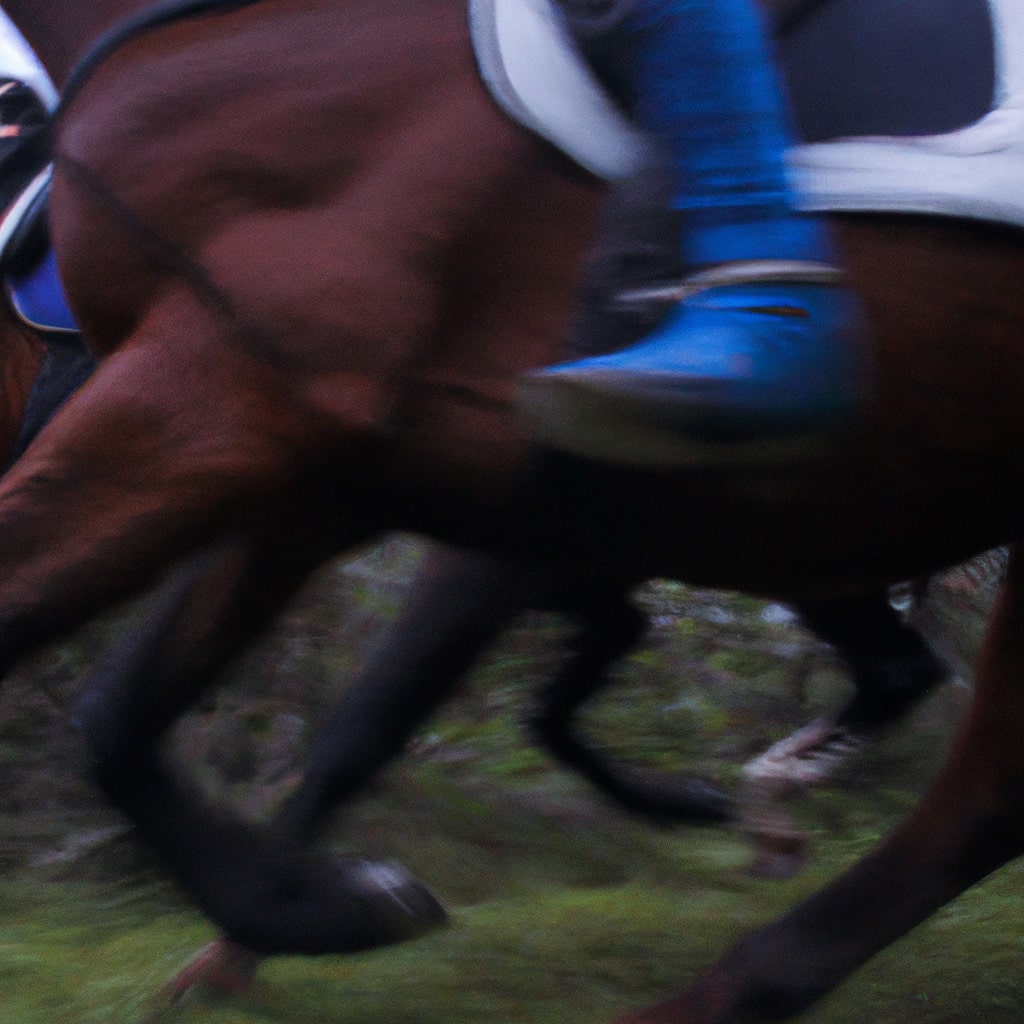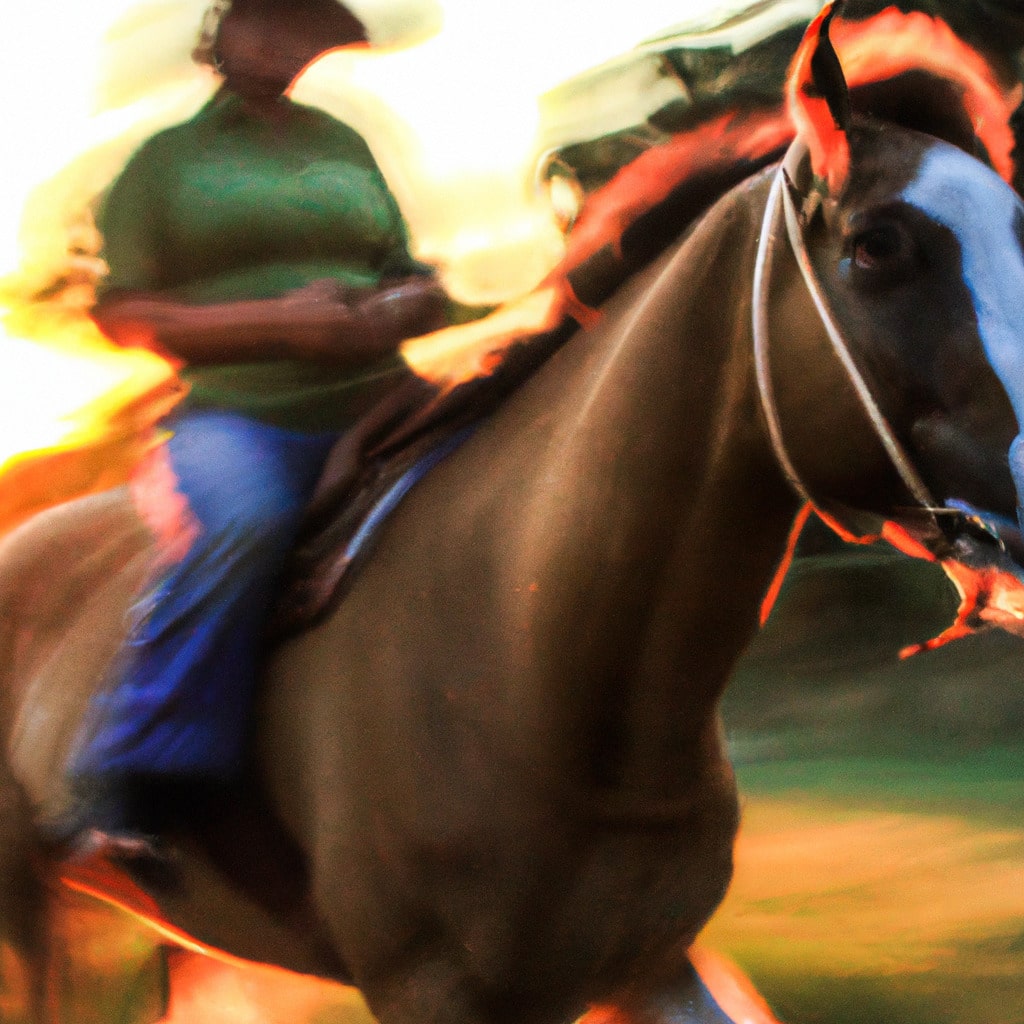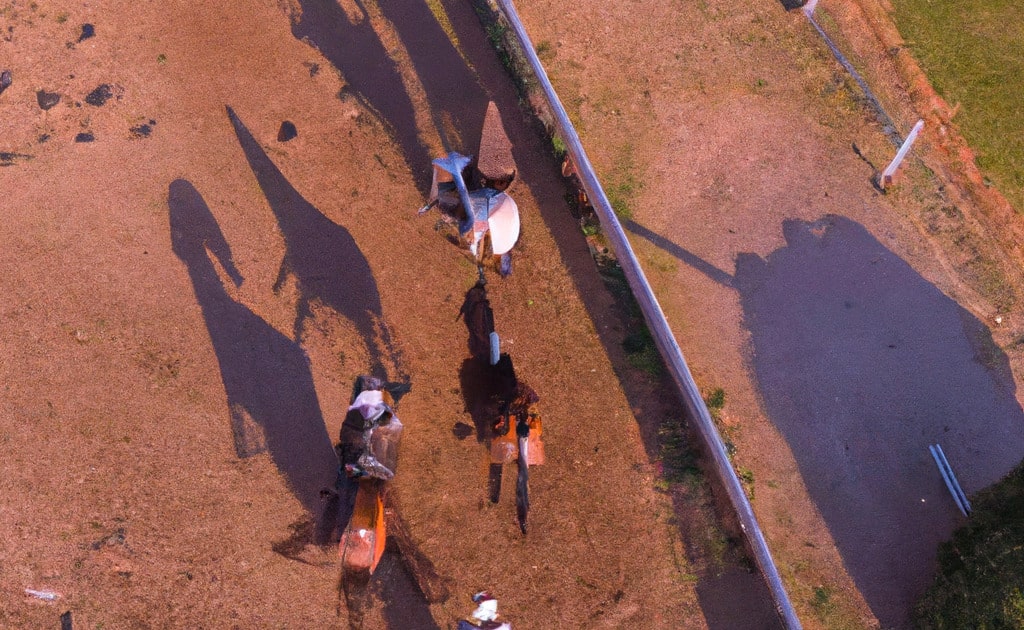Unleash the Power of Endurance Riding: A Comprehensive Guide for Horse Enthusiasts
Are you ready to embark on an exhilarating journey through the world of endurance riding? Look no further! In this ultimate guide, we will delve into the thrilling sport that tests the limits of both horse and rider.
Endurance riding is not your average equestrian discipline. It requires a unique combination of skill, strategy, and stamina. From the rugged terrains to the bond between horse and rider, there is something truly extraordinary about this sport.
Whether you are a seasoned rider looking to push your limits or a beginner eager to explore new horizons, this guide will equip you with all the essential knowledge and tips to excel in endurance riding.
Join us as we uncover the secrets to success in endurance riding, from training techniques to nutrition plans, and everything in between. Get ready to embark on an unforgettable adventure!
The Basics of Endurance Riding
Before diving into the world of endurance riding, it’s crucial to understand the basics of this thrilling sport. Endurance riding is a long-distance race that tests the endurance and stamina of both horse and rider. The goal is to complete a set distance, typically ranging from 25 to 100 miles, within a specific time frame. Unlike traditional horse races, endurance riding focuses on the horse’s overall condition and well-being, rather than speed alone.
One of the key principles of endurance riding is the concept of vet checks. Throughout the race, there are designated checkpoints where veterinarians assess the horse’s health and fitness. These vet checks ensure that the horse is in good condition to continue the race. If a horse fails a vet check, they are usually disqualified from the race to prioritize their well-being.
Endurance riding takes place in various terrains, including deserts, mountains, forests, and even coastal areas. Each terrain presents its own set of challenges and requires different strategies. Riders must be prepared to navigate through uneven terrain, steep inclines, and unpredictable weather conditions. It is essential to train both the horse and rider to adapt to different environments and terrains.
In endurance riding, the bond between horse and rider is of utmost importance. Trust, communication, and understanding are vital for success in this sport. Riders must develop a deep connection with their horses, as they rely on each other throughout the grueling race. Building a strong partnership takes time and patience, but it is the foundation for a successful endurance riding journey.
To excel in endurance riding, riders must also possess excellent navigation skills. Races are often marked with ribbons, flags, or GPS coordinates, and riders must follow the designated route. Getting lost during a race can result in valuable time wasted and potential disqualification. Familiarizing yourself with navigation techniques and practicing them during training rides is essential.
Proper training and conditioning are crucial for both horse and rider. Endurance riding requires a gradual increase in distance and intensity to build stamina and endurance. It is essential to develop a training plan that includes a mix of long-distance rides, interval training, and rest days. Additionally, riders must pay close attention to their horse’s nutrition, hydration, and overall well-being to ensure they are in optimal condition for the race.

Training for Endurance Riding
Training plays a vital role in preparing both the horse and rider for the challenges of endurance riding. To excel in this demanding sport, a comprehensive training program is essential. Here are some key aspects to consider when training for endurance riding.
1. Building Stamina: Endurance riding requires horses to cover long distances at a steady pace. Gradually increase the duration and intensity of your training rides to build your horse’s stamina. Incorporate hill work and interval training to simulate the challenges of endurance riding terrain.
2. Conditioning: Endurance riding demands a high level of fitness from both horse and rider. Regular exercise, such as trotting, cantering, and galloping, helps condition the horse’s muscles and cardiovascular system. Cross-training with activities like dressage or trail riding can also improve overall fitness.
3. Nutrition: Proper nutrition is crucial for the horse’s performance and recovery. Consult with a veterinarian or equine nutritionist to develop a balanced diet plan that meets the specific needs of endurance riding horses. Provide ample forage, high-quality hay, and appropriate supplements to support their energy requirements.
4. Hydration: Maintaining proper hydration is vital during endurance rides. Teach your horse to drink from unfamiliar water sources and practice electrolyte supplementation during training to ensure they stay hydrated during the race. Carry water and electrolyte solutions during the ride to offer frequent hydration breaks.
5. Mental Preparation: Endurance riding can be mentally challenging for both horse and rider. Gradually expose your horse to different environments, sights, and sounds to build their confidence. Practice relaxation techniques and establish a calm and focused mindset for yourself as the rider.
6. Gear and Equipment: Invest in high-quality gear and equipment that is suitable for endurance riding. This includes a well-fitted saddle, comfortable bridle, and protective leg boots. Regularly inspect and maintain your equipment to ensure it is in optimal condition for the race.
7. Practice Long-Distance Rides: As the race day approaches, incorporate long-distance training rides to simulate the endurance ride’s demands. These rides will help you assess your horse’s fitness level and identify any areas that need improvement. Gradually increase the distance and time spent in the saddle to build your own endurance.
Remember, endurance riding is a journey that requires patience, dedication, and a deep understanding of your horse’s capabilities. Tailor your training program to suit your horse’s individual needs, and always prioritize their well-being and safety.
Race Day Strategies and Tips
Race day is the culmination of all your hard work and preparation. To make the most of your endurance riding experience, it’s essential to have effective strategies and tips in place. Here are some valuable insights to help you navigate through race day.
1. Pacing: Endurance riding is not a sprint; it’s a marathon. Pace yourself and your horse accordingly. Start at a comfortable speed and gradually increase as the race progresses. Be mindful of your horse’s energy levels and adjust your pace to ensure they can maintain a steady rhythm throughout the ride.
2. Vet Checks: Vet checks are an integral part of endurance riding. Approach each vet check with a calm and organized mindset. Ensure your horse is well-rested and properly hydrated before presenting them for examination. Take note of any specific requirements or protocols at each vet check station.
3. Crew Support: Having a dedicated crew to support you during the race can make a significant difference. Your crew can help with horse care, hydration, and nutrition, allowing you to focus on riding. Establish clear communication and assign specific roles to each crew member to ensure a smooth operation.
4. Navigation: Familiarize yourself with the racecourse and any navigation aids provided. Pay attention to trail markers, ribbons, or GPS coordinates. Carry a map or GPS device as a backup. If you’re unsure about the route, don’t hesitate to ask fellow riders or race officials for guidance.
5. Ride Management: Effective ride management is crucial for a successful endurance ride. Monitor your horse’s vital signs, hydration levels, and overall well-being throughout the race. Make strategic decisions based on their condition and adjust your riding plan accordingly. Remember, the welfare of your horse should always be your top priority.
6. Mental Resilience: Endurance riding can be physically and mentally challenging. Stay positive and focused, especially during difficult moments. Develop mental resilience techniques such as visualization, positive self-talk, and goal-setting to help you overcome obstacles and stay motivated.
7. Safety Precautions: Prioritize safety at all times. Wear appropriate safety gear, including a helmet and protective clothing. Be aware of your surroundings and ride defensively, particularly when encountering other riders or crossing roads. Stay alert and follow any instructions or guidelines provided by race officials.
8. Post-Race Recovery: After completing an endurance ride, allow your horse ample time to recover. Implement a proper cool-down routine, including walking and stretching. Provide them with a comfortable resting area, plenty of water, and appropriate nutrition to aid in their recovery process.
Endurance riding is a thrilling and rewarding sport that pushes both horse and rider to their limits. By implementing these strategies and tips, you can enhance your performance, ensure the well-being of your horse, and make the most of your endurance riding journey.
In conclusion, endurance riding is a captivating equestrian discipline that offers a unique blend of adventure, skill, and camaraderie. It challenges both horse and rider to push their limits, navigate through diverse terrains, and build a deep bond of trust and communication. Whether you are a seasoned rider or a beginner, endurance riding has something to offer for everyone.
Through this ultimate guide, we have explored the basics of endurance riding, from the importance of vet checks to the significance of proper training and conditioning. We have delved into the strategies and tips for race day, emphasizing the need for pacing, crew support, navigation, and safety precautions.
Endurance riding is not just about winning races; it’s about the journey itself. It’s about the moments of connection and understanding between horse and rider, the breathtaking landscapes traversed, and the personal growth and resilience developed along the way. It’s about the shared experiences and camaraderie among fellow riders who understand the unique challenges and joys of this sport.
As you embark on your endurance riding journey, remember to prioritize the well-being and welfare of your horse. Take the time to build a strong partnership based on trust, respect, and effective communication. Invest in proper training, nutrition, and conditioning to ensure both you and your horse are prepared for the demands of the sport.
So, are you ready to embrace the thrill of endurance riding? Are you prepared to push your limits, explore new horizons, and forge an unbreakable bond with your equine partner? The world of endurance riding awaits, ready to challenge and reward those who dare to embark on this extraordinary adventure.
Are you ready to embark on the ultimate test of endurance riding?


